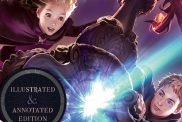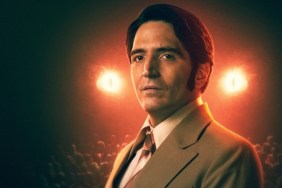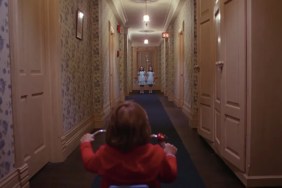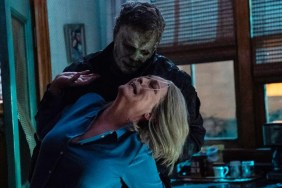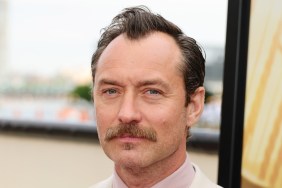
One of Criterion’s new releases this week is Victor Sjostrom‘s 1921 ghost story [amazon asin=”B0056ANHSQ” text=”The Phantom Carriage“] and it is a showstopper I can’t help but recommend. I haven’t yet had the chance to dig through the special features or listen to the commentary, but while the supplements appear to be largely dedicated to the effect this film had on the career of Ingmar Bergman, and the reasons for that become more and more obvious as the film plays on, the one thing that stuck out to me, and nearly blew me over it was so spot on, was the obvious influence this film had on one of my favorite filmmakers.
Everyone knows the famous axe scene in Stanley Kubrick‘s The Shining as Jack Nicholson hacks away at the bathroom door, his wife and child on the other side scared for their lives… Chop, chop, chop… Here’s Johnny! It’s an iconic moment and one I never knew wasn’t a Kubrick original.
The 1921 Swedish film The Phantom Carriage is a ghost story, centering on a legend that says the last soul to die on New Year’s Eve must spend the following year collecting the souls of the dead, taking them to their final resting place. The story centers on David Holm (Sjostrom), a drunkard that dies at the stroke of midnight, but in Dickensian fashion is led through his life in such a way that he must either change the man he is or die knowing those around him will suffer.
In one flashback scene we watch as David begins beating on a locked door. On the other side his wife and two children are hiding in fear. He begins hacking away at the door and after about one stroke you can’t help but think of anything other than Kubrick’s movie. That is, depending on which one you saw first.
I have included both scenes directly below and I’m happy the version from The Phantom Carriage uses the experimental score from KTL, rather than the more traditional score from Matti Bye, which is also available on the Blu-ray. The Bye score is fine, but man-oh-man does the KTL score evoke some serious atmosphere. The two versions are night and day when you compare them and for this scene the KTL version undoubtedly is the best choice.
| The Phantom Carriage (1921) | The Shining (1980) |
The two scenes offer such an amazing compare and contrast in sound and visual impact. The sound of the axe pounding on the door versus the silent ferocity of David’s swings. The way the camera moves with Nicholson with each strike versus the static camera work and sepia coloring in Phantom Carriage. However, the two scores are strangely even, both minimal, letting the action tell the story while providing a brooding bed for them to lay on. The one thing Phantom Carriage can’t match are the screams of Shelley Duvall, but then again, the differing result of the two scenes is a major reason for that.
Ironically enough, last night while I was putting this piece together I came across the news (via io9) that Stephen King was working on a sequel to The Shining called “Dr. Sleep” which will center on a grown-up Danny Torrance as he’s become a hospice worker who uses his powers to help ill patients to pass away without pain. Unfortunately, he runs afoul of a traveling group of psychic vampires called The Tribe who feed on people’s energy.
King was also recorded during an awards ceremony at George Mason University last Friday where he read a chapter from the unfinished novel, which I’ve included below. What are the odds someone gets their grubby little hands on that book and turns it into a film? Who should do it? Oh, wait, don’t tell me… David Fincher?

